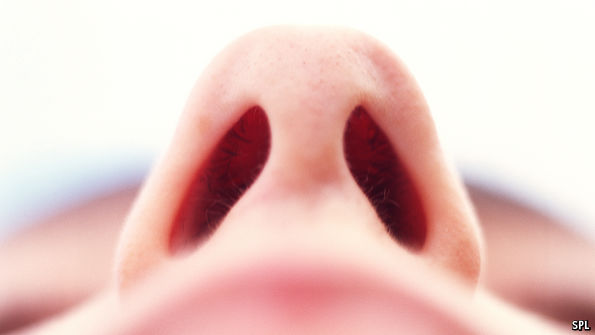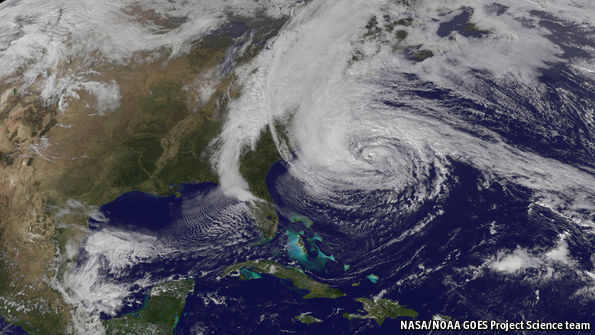Diagnosing illness by smell
 The nose knows
The nose knowsONE of a doctor’s most valuable tools is his nose. Since ancient times, medics have relied on their sense of smell to help them work out what is wrong with their patients. Fruity odours on the breath, for example, let them monitor the condition of diabetics. Foul ones assist the diagnosis of respiratory-tract infections.
But doctors can, as it were, smell only what they can smell—and many compounds characteristic of disease are odourless. To deal with this limitation Hossam Haick, a chemical engineer at the Technion Israel Institute of Technology, in Haifa, has developed a device which, he claims, can do work that the human nose cannot.
The idea behind Dr Haick’s invention is not new. Many diagnostic “breathalysers” already exist, and sniffer dogs, too, can be trained to detect illnesses such as cancer. Most of these approaches, though, are disease-specific. Dr Haick wanted to generalise the process.
As he describes in ACS Nano, he and his colleagues created an array of electrodes made of carbon nanotubes (hollow, cylindrical sheets of carbon atoms) and tiny…Continue reading
Source: Economist






